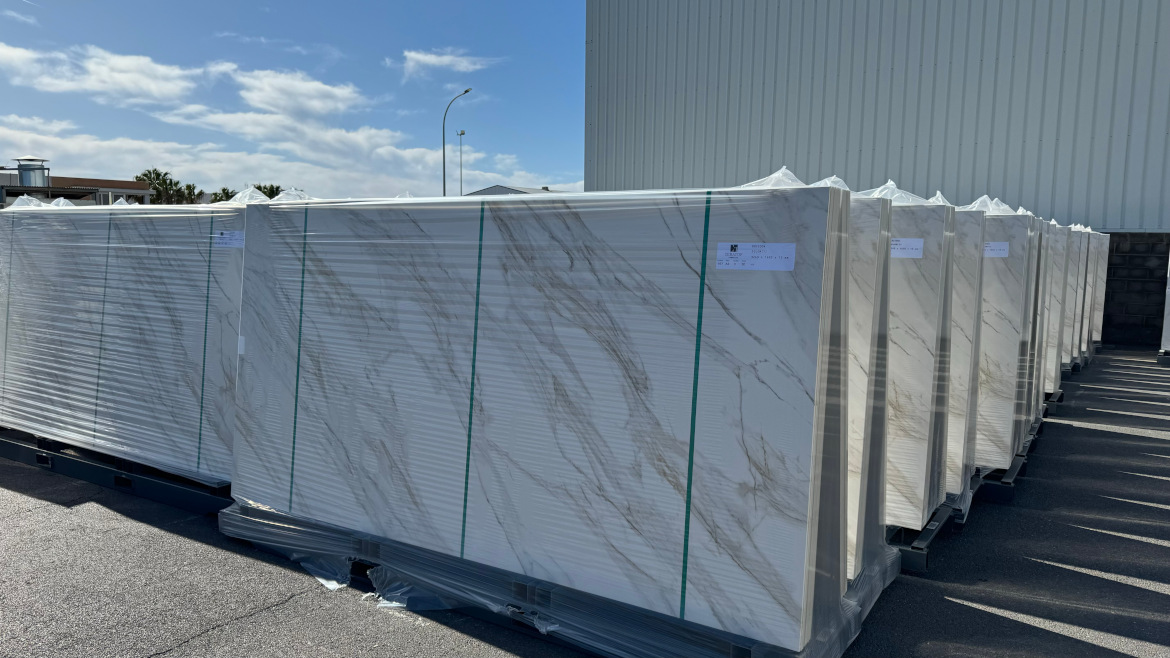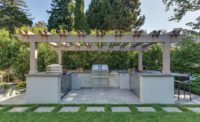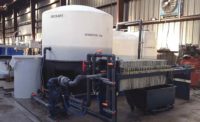A group of fabricators met for a Fabricator Forum moderated by the Stone Fabricator’s Alliance (SFA) earlier this year during StonExpo, which is part of The International Surface Event (TISE), held at the Mandalay Bay Convention Center in Las Vegas, NV. Among the pressing topics on the top of mind for participants was working with porcelain slabs. While their popularity is on the incline for design, many fabricators are hesitant to cut the material due to its fragility. Industry veteran Ron Hannah of Cadenza Granite & Marble in Concord, NC, provided some insight to the group on cutting, handling and pricing the material.
“Many years ago, when quartz came into the game, I said to myself that will never sell,” said Hannah. “I was at the train station watching the ship take off. I missed that boat. When porcelain came around, I wasn’t going to make the same mistake twice, so I hopped on a plane to Modena, Italy, and got myself a tour of two factories. I walked away saying to myself, these people invested hundreds of millions of dollars in porcelain. It is not going away.”
Hannah told the group it was about six years ago when he made the decision to go out into the porcelain market. “We have pretty much cornered the porcelain market in Charlotte, NC,” he said. “It is not going away, so you have to learn how to use it. You have to learn how to work it. The joy of porcelain is that no one else wants to touch it so your margins are huge. Don’t make the mistake of driving it into the ground – driving the price down.”
The Cadenza team began cutting porcelain slabs with a CNC bridge saw. “We started experimenting with RPMs and blades,” explained Hannah. “We became very successful at mitering porcelain with pretty much zero chips, but it was slow. It slows your shop down to a snail’s pace. So, a year ago, we invested in a waterjet, and it has changed the game. That machine works day and night, solely on porcelain, and it has freed up everything so that the other employees can go back to what they were doing.
“Americans love for everything to always look new,” Hannah went on to say. “Americans love marble, but they don’t love the characteristics of marble. If marble didn’t etch, there would be no porcelain. The whole porcelain game is catered to the American market. It gives people the marble look without the etching and staining of marble.”
Hannah emphasized to the group that for those getting into porcelain, there has to be a change in your entire mindset. “Your workers have to change how they unload the truck, how they stack the material and how they move the material,” he said. “If you are moving a 6mm-thick slab of porcelain and you even graze the side of a piece of equipment, it shatters. It doesn’t crack. It shatters. You have to change everyone’s mindset, and everyone must move more deliberately.
“But again, the upside is, name your number,” he continued. “[Your customers] have no other choice if they really want it. Porcelain is the new game. Don’t shy away from it. Become the best at it.”
One fabricator in the group asked if there are any differences handling, Dekton compared to porcelain or other sintered stone materials?
“With Dekton versus Neolith versus porcelain, the differences are slight, but they are all the same,” said Hannah. “Once you establish a protocol for working with that type of material – sintered materials – it pretty much applies to them all. Be cautious. Go slow and be deliberate.”
Hannah told the group porcelain currently represents about 65% of Cadenza’s business. “It’s huge,” he said.
Another question was asked regarding any feedback from homeowners if the countertop gets chipped and needs repair.
“Does it chip? Everything chips,” said Hannah. “I don’t care if it is marble, granite or porcelain. You have to learn how to repair it. The key to repairing porcelain is the color match. We are fabricators. There is nothing that anyone of us can’t do.
“There is no specific epoxy,” Hannah went on to say. “We used to look at it like body work – find a good epoxy, get the color that is perfect and then you don’t blade it with a razor, you sand it like body work.”




